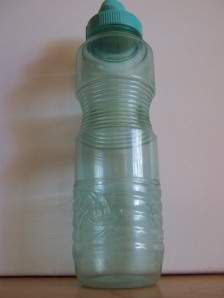…an update on The Sustainable Shave
My bit of irony for the last few weeks has been life without my electric razor – the subject of my last post. The electric razor was the star of the show, the hero, my savior from a life of scraggly scruffiness.
It was ranked #2 on my list of things-not-very-sustainable-but-I-don’t-care-I’m-keeping-them-anyway, or TNVSBIDCIKTA.
 Somehow my beloved electric razor got dropped, thrown, kicked, or drop-kicked against something. Unaware, I started up the right (my right, your left) side of my face and got about halfway up the cheek by the time I felt the pain and realized something wasn’t right.
Somehow my beloved electric razor got dropped, thrown, kicked, or drop-kicked against something. Unaware, I started up the right (my right, your left) side of my face and got about halfway up the cheek by the time I felt the pain and realized something wasn’t right.
My screen had a sizable hole, big enough to leave a small series of vertical, reddish-hued streaks on my poor, unsuspecting cheek.
The hole rendered the razor useless. If it was on one edge or the other I could work around it and, in the past, in times of crisis not unlike the current situation, I’ve been known to do just that until I could get a replacement screen. It’s a tricky, delicate operation, not for the faint of heart. But I’m no coward (notwithstanding the fact that I’m still squeamish about the idea of using a straight razor – that’s just common sense!) and have plenty of manly tolerance for pain. A nick or two here and there is good for the constitution, builds character. But a hole in the middle of the screen – that’s another story. There’s no skirting the issue. There’s no getting around it. I’m stuck.
Having suffered the week-long, emotionally-scarring ordeal involving letting my facial hair grow, I wasn’t anxious to repeat that particular episode. Wal-Mart might have a replacement screen, or they might not. It’s a one hour drive just to find out. I could call, but I’ve been down that road before and learned Wal-Mart employees will say whatever they think you want to hear just to get you off the phone. Call me cynical.
I could order a new screen online, but it’ll take a few days to get here, maybe as long as a week. I don’t have that kind of time.
So I bought the cheapest triple-blade disposables available at the local grocery store, spending $3.47 plus tax for four razors and buying myself some time. Time to think. Time to reflect. Time to weigh the options again…
I hate the idea of throwing disposable razors in the trash. But I’m actually enjoying the process of lathering up and shaving. The electric razor seemed impersonal by comparison.
I’m undecided… Lip balm’s still firmly ensconced at #1 on the TNVSBIDCIKTA list, but #2’s up for grabs.


